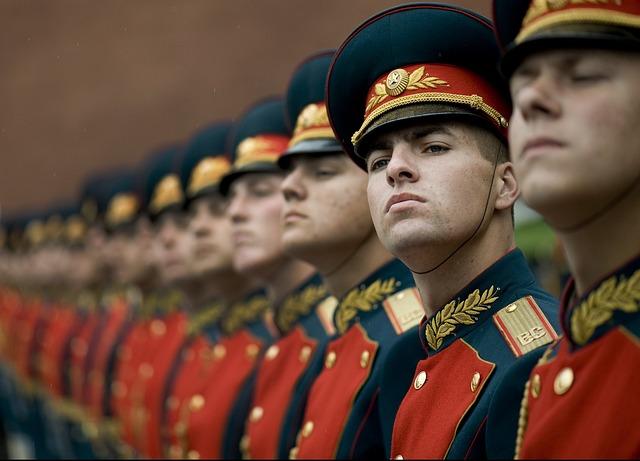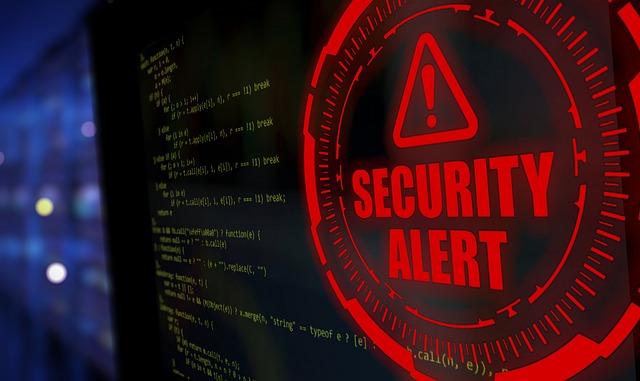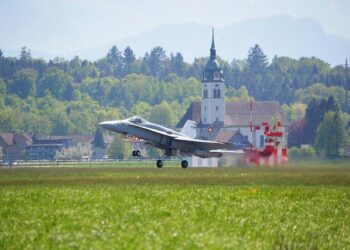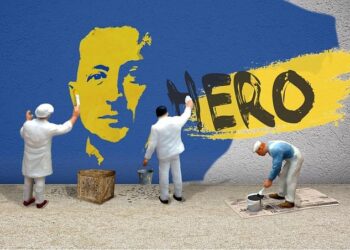Introduction
As the conflict in Ukraine continues to evolve, the Institute for the Study of War presents its latest assessment of Russia’s offensive campaign as of February 19, 2025. This comprehensive report analyzes the military strategies, territorial gains, and shifts in combat operations that have characterized the Kremlin’s approach in the region over the past months.With increasing international scrutiny and the geopolitical landscape shifting under the pressures of ongoing warfare, understanding the nuances of Russia’s military ambitions is more crucial than ever. The report delves into the operational effectiveness of Russian forces,the implications for regional security,and the response from Ukraine and its allies. By providing a detailed examination of the current state of the offensive, we aim to shed light on the complexities of this enduring conflict and its potential trajectories in the coming months.
Russian Ground Operations: Tactical Shifts and Strategic Implications
Recent analyses reveal critical adjustments in Russia’s ground operations, indicating a shift towards more dispersed and flexible units. This tactical evolution addresses the challenges encountered in previous engagements, enabling Russian forces to enhance their operational effectiveness. Key elements of this strategic recalibration include:
- Increased mobility: Units are now utilizing smaller, more mobile combat groups to adapt to the fluid dynamics of the battlefield.
- Enhanced Coordination: Improved communication protocols among infantry,armor,and supporting air assets.
- Adaptation to Terrain: Leveraging natural landscapes and urban environments for tactical advantages.
The implications of these operational changes extend beyond immediate combat effectiveness; they may redefine the strategic landscape of the conflict. As Russian forces implement these tactics, they could potentially destabilize existing frontlines and create new opportunities for advancement. Notably, the anticipated outcomes of these shifts include:
- Prolonged Engagements: A more agile force is likely to extend the duration of confrontations, complicating enemy planning.
- Psychological Impact: The unpredictability of dispersed units can induce confusion and fear in opposing forces.
- Resource Allocation Changes: A shift in focus towards rapid resupply and reinforcement strategies may strain logistical capabilities.

Air Dominance and Counteroffensive Strategies in Eastern Ukraine
The current operational landscape in eastern ukraine underscores the critical intersection of air dominance and counteroffensive operations. the Ukrainian forces have emphasized the need for robust air support to mitigate the asymmetric warfare tactics employed by Russian troops. Air superiority provides a distinct advantage, enabling ground units to maneuver effectively and respond to threats with precision. As of this assessment, several key elements are pivotal to understand:
- Integration of Drone Warfare: The deployment of uavs has transformed reconnaissance and targeting, facilitating real-time intelligence which enhances defensive and offensive capabilities.
- Counterbattery Operations: Advanced radar systems allow for rapid detection and targeting of Russian artillery, underpinning the necessity of controlling the skies to protect ground forces.
- Allied Support: Ongoing assistance from Western nations fuels Ukrainian air operations, with advanced fighter jets and support systems bolstering their aerial tactics against Russian incursions.
Conversely, the Russian military has adapted its strategies to focus on maintaining air superiority while executing rapid ground offensives. The implementation of multidomain tactics has bolstered their operational effectiveness. Key strategies include:
- Persistent Aerial Assaults: Continuous airstrikes not only aim to cripple Ukrainian air defenses but also to sow chaos among ground troops, fostering disarray and vulnerability.
- Electronic Warfare Measures: Increasing reliance on jamming and cyber capabilities seeks to neutralize Ukrainian communication and guidance systems during engagements.
- Concentration of Forces: The Russian military exploits concentrated troop formations to launch overwhelming assaults,yet these tactics can backfire if Ukrainian forces manage to achieve localized air superiority.
| Aspect | Ukrainian Strategy | Russian Strategy |
|---|---|---|
| Air Support | Enhanced drone and allied airforce cooperation | Continuous aerial bombardment and disruption |
| Ground Engagements | Rapid counteroffensives aimed at reclaiming territory | Overwhelming force tactics with concentrated units |
| Intelligence and Warfare | Focus on real-time intelligence sharing and adaptive strategies | use of electronic warfare and cyber tactics to gain an edge |

The Role of International Support in Strengthening Ukrainian Defense
The ongoing conflict in Ukraine underscores the crucial importance of international support in fortifying the country’s defense capabilities.The multifaceted assistance provided by allied nations has not only enhanced Ukraine’s military resources but also strengthened its strategic resilience. Key contributions include:
- Military Aid: Advanced weaponry, training programs, and logistical support from NATO countries have equipped Ukrainian forces with the necessary tools to engage effectively against ongoing offenses.
- Intelligence Sharing: Real-time intelligence from international partners has enabled Ukrainian command to make informed decisions and adapt swiftly to battlefield dynamics.
- Economic Assistance: financial aid and economic sanctions against aggressors have bolstered Ukraineãs capacity to sustain its defense efforts amidst severe economic challenges.
Moreover, international support plays a pivotal role in fostering a cohesive defense strategy that benefits not just Ukraine, but regional stability as a whole. Collaborative training exercises and joint military operations enhance interoperability among allied forces, creating a network of defense that deters further aggression. The impact of this solidarity can be illustrated in the following table:
| Type of Support | Examples | Impact |
|---|---|---|
| Military Aid | Anti-tank weapons, drones | Increased battlefield efficacy |
| Intelligence Sharing | Satellite imagery, cyber intelligence | Enhanced situational awareness |
| Economic Assistance | Grants, loans | Strengthened defense financing |

Logistical Challenges facing the Russian Military Campaign
The ongoing military campaign of Russia has encountered a multitude of logistical challenges that substantially hinder its operational effectiveness.Key issues include:
- supply Chain disruptions: The reliance on outdated supply routes has resulted in delays and shortages of essential materials, impacting troop morale and operational readiness.
- Transportation Infrastructure: Damage to railways and roads, particularly in conflict zones, exacerbates the difficulties in moving personnel and equipment swiftly.
- Resource Allocation: Competition for resources among various military branches often leads to inefficient distribution, further compounding logistical inefficiencies.
Additionally,the Russian military’s planning and execution have suffered from a lack of real-time data and situational awareness. The difficulties lie not only in sourcing materials but also in managing personnel effectively amid a rapidly changing battlefield. Factors include:
- Communication Breakdown: Poor communication networks hinder coordination, leading to mismanaged supplies and delayed responses to emerging threats.
- Training Shortfalls: Inadequate training for logistics personnel results in operational mistakes and mismanagement.
- Weather Concerns: The harsh winter conditions create additional obstacles, affecting mobility and logistical operations, forcing troops to rely on outdated methods.

Cyber Warfare and Information Operations: New Fronts in the Conflict
The ongoing conflict has significantly evolved through the integration of cyber warfare and information operations, creating new challenges for both state and non-state actors. Cyber capabilities are now pivotal in shaping perceptions, influencing public opinion, and carrying out strategic objectives without conventional military engagements. For instance, Russian forces have been utilizing targeted disinformation campaigns, leveraging social media and online platforms to manipulate narratives and sow discord among adversaries. Such operations exploit existing societal fractures, effectively turning public sentiment into a weapon, thus complicating the traditional understanding of warfare that focused solely on physical confrontations.
Alongside information operations, the sophistication of cyber attacks has escalated, with critical infrastructure becoming increasingly vulnerable. The strategic targeting of critical infrastructure includes both military and civilian nerve centers, as evidenced by recent incidents. A closer examination reveals a pattern where Russian actors have attempted to disrupt the energy grid, financial institutions, and even health care systems across various nations. The following table illustrates the key areas targeted by cyber operations and the strategic importance of each:
| Target Area | Strategic Importance |
|---|---|
| Energy Sector | Critical to national resilience and economic stability |
| Financial Institutions | Disruption can lead to economic chaos and loss of public trust |
| Healthcare Systems | Targeting this sector can undermine public confidence during crises |
| Telecommunications | essential for coordination and information flows during wartime |

Recommendations for U.S. and NATO Response to Evolving Threats
In response to the changing landscape of threats posed by Russia, U.S. and NATO allies must adopt a multi-faceted strategy that emphasizes both military readiness and diplomatic engagement.This involves enhancing the defensive posture along NATOãs eastern flank, ensuring that member states are adequately equipped and prepared to deter aggression. Key recommendations include:
- Increasing troop deployments and conducting joint exercises in Eastern Europe to demonstrate commitment to collective defense.
- Strengthening cyber defenses to protect critical infrastructure from increasingly sophisticated Russian cyber operations.
- Bolstering intelligence sharing among allies to ensure timely and accurate assessments of Russian movements and intentions.
Moreover, it is crucial to maintain a robust diplomatic dialogue with russia while together preparing for potential escalations. This dual approach should focus on establishing clear lines of communication to prevent misunderstandings that could lead to conflict. Additionally, U.S. and NATO should consider:
- Implementing targeted sanctions against individuals and entities that support aggressive activities.
- Supporting democratic movements and resilience in countries on the periphery of Russiaãs sphere of influence.
- Engaging in public diplomacy to counter propaganda and misinformation campaigns that challenge NATO unity.

Future Outlook
the “Russian Offensive Campaign Assessment” for February 19, 2025, provides a critical lens through which to understand the evolving dynamics of the conflict in Ukraine and its broader implications for regional security.The report highlights key strategic shifts and operational developments, illustrating the ongoing complexities of the battlefield and the resilience of both Ukrainian forces and Russian military tactics. as the situation continues to evolve, the insights offered by the Institute for the Study of War serve as an invaluable resource for policymakers, analysts, and the public alike, emphasizing the importance of ongoing vigilance and informed discourse in addressing the challenges posed by this protracted conflict. Given the interconnectedness of global geopolitics, the stakes remain high, and the path forward will require careful navigation to foster stability and peace in the region.As we monitor the unfolding events, the need for comprehensive understanding and strategic foresight cannot be overstated.
















